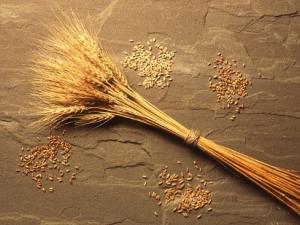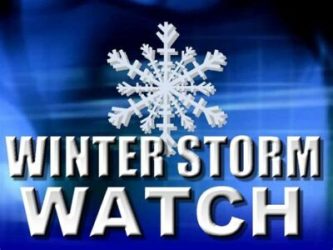Despite being slowed last week by rain, the main portion of this year’s wheat harvest is getting ready to wrap up in the Crookston area this week.
The 2020 crop wasn’t the bounce-back year some were hoping for, according to Jochum Wiersma, a professor in the Department of Agronomy and Plant Genetics for the University of Minnesota Extension. “A lot of growers are wrapping up this week, and there are obviously some fields that are later seeded because we had such a wet fall and really wet spring,” said Wiersma. “I think for the most part people are a little disappointed with the yields or maybe hoped for more. The quality, in general, is good. The protein content is good, which is not surprising because we tend to see a higher protein content with lower yields. Test weight is okay, even though we’ve had some rain showers, and that generally takes a little of the test weight away. People probably wished for 10 bushels more an acre, especially with these prices, but the heat in the latter part of July probably took the top off the yields.”
Last year falling numbers were also an issue across northwest Minnesota and North Dakota. Wiersma said there is some quality concern again this year but that so far this year, lower falling numbers appear to be limited mostly to a region between Crookston and Mahnomen. “Falling numbers is a measurement of sprout damage and affects end-use quality as well as seed quality,” said Wiersma. “Last year the problems were throughout the region, throughout North Dakota, simply because we had such a wet fall. We started wheat harvest, and then the rain started and never stopped. This year we’ve had fewer rain events, but there are problems locally with falling numbers. Right now, the sense I get is it’s limited mostly to the Crookston through Mahnomen region. Further north people are not talking about falling number problems yet and further south, the wheat was already off before some of these rains started. So, it’s a more localized problem for individual growers.
Wiersma added that while last year’s falling numbers were an issue in many wheat varieties and this year’s numbers are tied more to specific varieties, it’s still a major issue. “Obviously, it’s still a major issue, and we’re also seeing it’s tied more to specific varieties this year than last year,” said Wiersma. “We know varieties differ for pre-harvest sprout tolerance, and we have a couple of varieties that are more prone to pre-harvest sprouting. As a consequence, with the weather we’ve had, we see damage in those varieties first, and that’s what’s happening.”
Noah Insurance Agent Nick Noah said that the fall price for wheat also looks like it will have a reduction around 10 percent, and with lower yields and falling numbers means area farmers should be contacting their crop insurance agents for potential claims. “The yields, we’ve been seeing, are anywhere from 40 to 80 bushel, sometimes in the same operation,” said Noah. “Another issue people should be aware of is falling numbers. They’ve been anywhere from 138, poor quality, and having good quality up in the higher 300s. If you’re experiencing low yield or falling numbers, you should be reaching out to your crop insurance agent because you could potentially be in a claim situation. At the end of the month, we’ll up wrapping up our fall price for wheat. It’s at $5.03 today, so we’re looking at being down about 10 percent. That’s another reason you could be in a claim is because of the low fall price today.”
Coming off of last year, Wiersma said the hope was for more this year, but producers will likely be facing tight margins to break even on the crop this year. “I think given last year’s hangover, everybody was hoping for more,” said Wiersma. “We probably lost 10 bushels per acre with the weather during grain fill. Most people would probably like the 10 bushels at this point given the prices. Overall, it’s a very tight margin, if a margin at all depending on the individual producer’s cost. It’s a breakeven proposition for a lot of guys.”
Noah also encouraged farmers to get their Price-Loss Coverage (PLC) wheat yield paperwork from the Farm Service Agency in time to get it completed and returned from the deadline in September. “Another thing we’ve been busy doing is helping our farmers do the PLC yield update,” said Noah. “That deadline is coming up September 30, so you’ll want to make sure you get that paperwork from the FSA to get that filled out and turned into them, so you can take advantage.”




